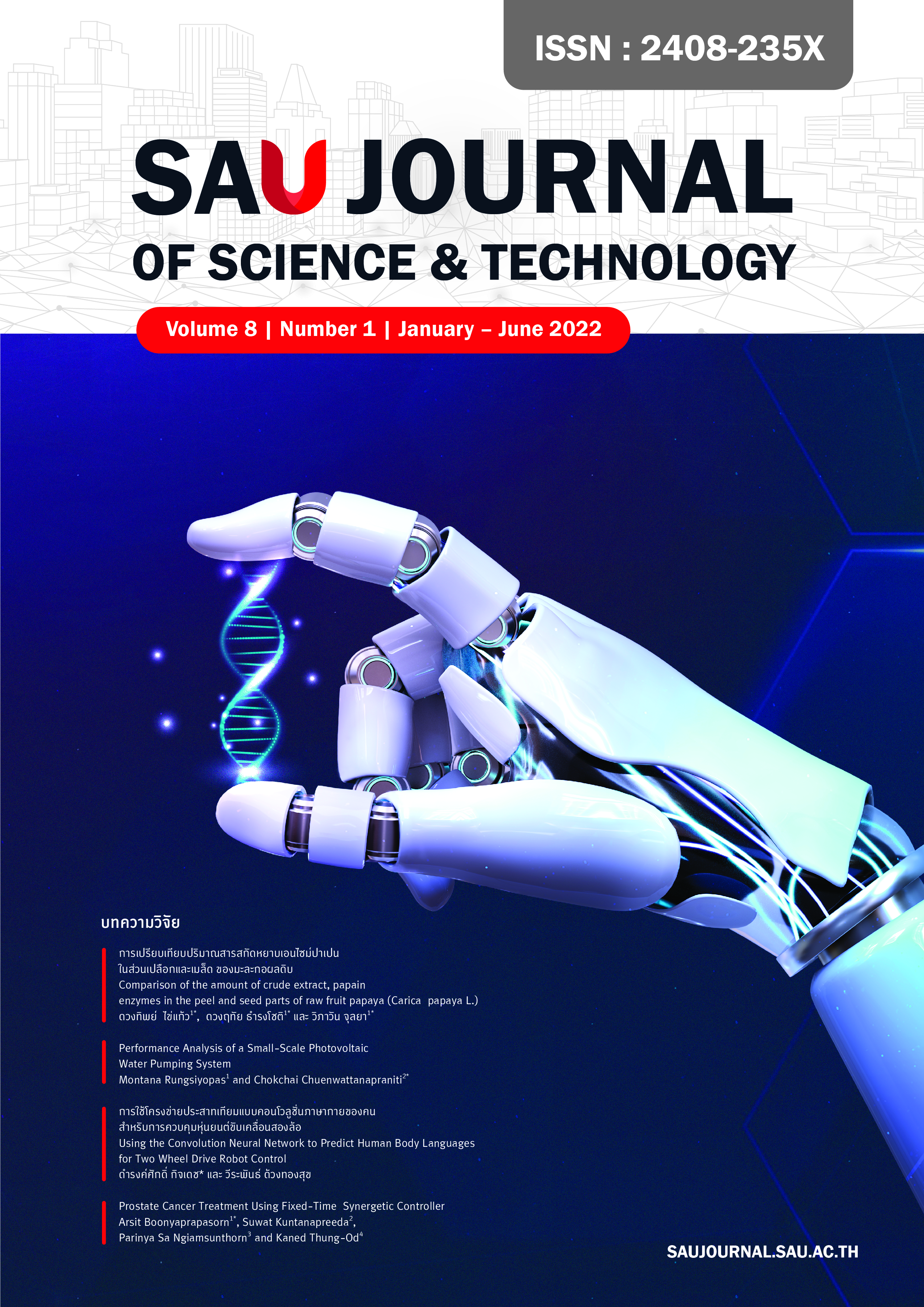Comparison of the amount of crude extract, papain enzymes in the peel and seed parts of raw fruit papaya (Carica papaya L.)
Main Article Content
Abstract
This research compares the amount of crude extracts, papain enzymes extracted from the peel and seed parts of raw papaya, and tests the effectiveness of coarse extracts from the waste parts of different varieties of raw papaya. Which uses raw papaya variety of Holland Kuekdam and Kueknuan. The amount of crude extracts, papain enzymes extracted from the peel and seed portions of Kuekdam varieties, was as high as 131.34 and 169.13 mg/ml, followed by 105.47 and 147.33 mg/ml Kueknuan varieties and Holland varieties of 92.67 and 145.58 mg/ml respectively. Crude extraction, papain enzymes extracted from the seed part are more effective at digesting proteins than from the portions of raw fruit papaya peel by measuring texture shear. Crude extract, papain enzyme extract of papaya, raw fruit, Kuekdam varieties, has the highest efficiency both from the seed part and the part of the peel. The shear average is 101.35 N and 136.22 N. The effectiveness of protein degradation depends on temperature and alkaline acidity.
Article Details
References
L. You, M. Zhao, R.H. Liu and J.M. Regenstein, “Antioxidant and antiproliferative activities of loach (Misgurnus anguillicaudatus) peptides prepared by papain digestion,” Journal of Agricultural and Food Chemistry, vol. 14, pp. 7948-7953, 2010.
K. Konno, C. Hirayama, M. Nakamura, K. Tateshi, Y. Tamura, M. Hattori and K. Kohno, “Papain protects papaya trees from herbivorous insects: role of cysteine proteases in latex,” The Plant Journal, vol. 37, pp. 370-378, 2004.
S. Arpossorn and N. Kanjanaporn, “Proteolytic activity of crude extract from different parts of pineapple and papaya,” Khon Kaen Agriculture Journal, vol. 48 suppl, pp. 1087-1092, 2020. (in Thai)
S. Ketnawa, P. Chaiwut and S. Rawdkuen, “Pineapple wastes: A potential source for bromelain extraction.,” Food Bioprod. Process, vol. 90, pp. 385-391, 2012.
A. Ninfa, D. Ballou and M. Benore, Fundamental Laboratory Approaches for Biochemistry and Biotechnology, John Wiley & Sons Inc, 2010.
N. Rattanapnont, Food Chemistry, Odeonstow Publishing, Bangkok, 2010. (in Thai)
J. Jain, “Review on isolation and purification of papain enzyme from papaya fruit,” International Journal of Engineering Applied Sciences and Technology, vol. 5, pp. 193–197, 2020.
M. Esti, I. Benucci, C. Lombardelli, K. Liburdi, A. Maria and V. Garzillo, “Papain from papaya (Carica papaya L.) fruit and latex: Preliminary characterization in alcoholic-acidic buffer for wine application,” Journal of Food Bioprod Process, vol. 91, pp. 595-598, 2013.
K. Erdmann, W.Y. Cheung and H. Schroder, “The possible roles of food derived bioactive peptides in reducing the risk of cardiovascular diseases,” Journal of Nutritional Biochemistry, vol. 19, pp. 643–654, 2008.
Z. Liya, W. Cui, J. Yanjun and G. Jing, “Immobilization of Papain in Biosilica Matrix and Its Catalytic Prpperty,” Chinese Journal of Chemical Engineering, vol. 21, pp. 670-675, 2013.
W. Wang,Z. Li, J. Liu, Y. Wang, S. Liu and M. Sun, “Comparison between thermal hydrolysis and enzymatic proteolysis processes for the preparation of Tilapia skin collagen hydrolysates,” Czech Journal of Food Science, vol. 31, pp. 1-4, 2013.


